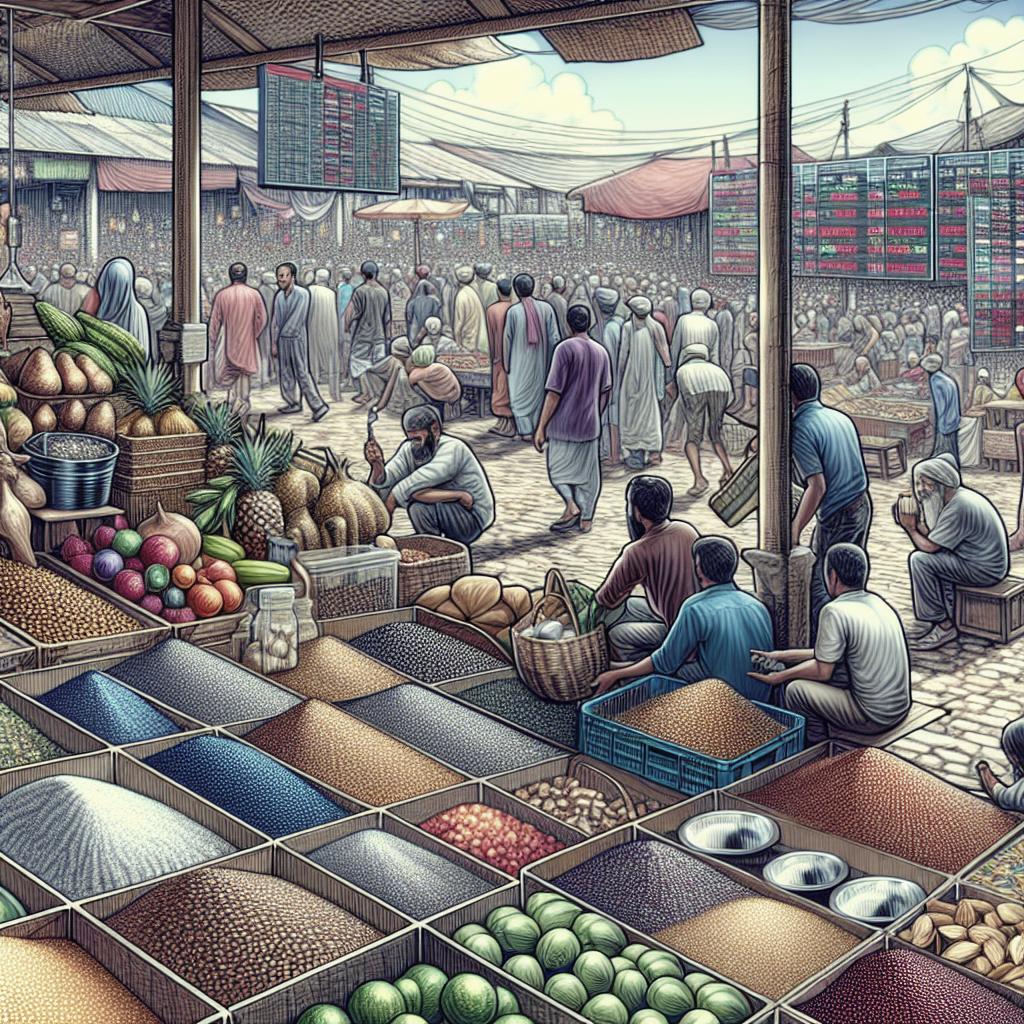Understanding Shortages in Commodity Markets
Commodity markets are an integral part of the global economy, influencing everything from trade policies to retail prices. Recently, shortages in these markets have sparked concerns, affecting industries like agriculture, manufacturing, and technology. This article delves into the complexities behind commodity shortages by examining historical price trends, global supply and demand dynamics, and their impact on U.S. trade. We also explore the contributing factors to the shortages in 2024, along with innovative solutions like JibChain. Join us as we unravel these elements, providing insights into how they shape the current economic landscape and what the future holds for commodity markets.
Background
The commodity market has always been subject to variability and volatility, driven by several factors, including geopolitical tensions, environmental challenges, and economic policies. Historically, these markets have responded to shifts in global demand and supply, reflecting changes in consumption patterns and production capabilities.
The past few decades have seen a variety of disruptions that have influenced commodity prices and availability. From the oil crises of the 1970s to more recent trade conflicts and pandemics, each event has contributed to shaping current market dynamics. These historical contexts are crucial for understanding the current shortages and trends within the commodity markets.
Today, global interdependencies in supply chains have intensified, making markets more susceptible to fluctuations from local disruptions. As a result, industries must navigate the complexities of maintaining stability amid these challenges, highlighting the importance of resilient and adaptable strategies.
Backgrounds
The concept of ‘backgrounds’ in the context of commodity markets pertains to the underlying systemic issues that permeate the industry. These include infrastructure inefficiencies, regulatory challenges, and socio-political factors that inherently affect supply chain operations and market stability.
Moreover, technological advancements have both resolved and exacerbated supply challenges. On one hand, technology has enabled better data analysis and forecasting, but on the other, it has led to rapid changes in production techniques and competitive pressures. Understanding these backgrounds is vital to comprehending how they contribute to current and future market conditions.
Such systemic issues require stakeholders to engage in collaborative efforts, focusing on fostering innovation, improving infrastructure, and creating robust policies to mitigate the effects of these foundational factors on global commodity markets.
Background
Revisiting the concept of ‘background,’ we delve deeper into the influence of cultural and economic backgrounds on commodity trade. The dynamic interplay of different economic ideologies, trade policies, and cultural factors heavily influences the accessibility and pricing of commodities.
The integration of diverse economies into the global market has highlighted the importance of cultural competence and economic insight in shaping trade relations. Understanding these differences helps industry players better navigate market complexities and implement strategies that address unique regional challenges.
It is essential to factor in these backgrounds when analyzing market behaviors, as they provide a comprehensive view of the varying market pressures affecting the commodity industries.
Commodity Price Trends
The past decade has witnessed significant fluctuations in commodity prices, driven by multiple interconnected factors. Price trends often reflect broader economic cycles, infrastructural developments, and environmental changes that influence supply and demand.
Energy commodities like oil and natural gas have experienced volatile price swings due to geopolitical tensions and shifting production levels. Similarly, agricultural commodities have been impacted by climate change, causing unpredictability in crop yields and pricing.
Understanding these price trends is essential for businesses and policymakers to forecast potential market disruptions and adjust strategies accordingly. It enables them to make informed investment decisions, manage risks, and plan for future market scenarios.
Global Supply and Demand Factors
At the heart of commodity markets are the fundamental supply and demand dynamics, which are influenced by a plethora of global factors. Economic growth typically drives up demand for raw materials, while natural disasters and political instability can disrupt supply chains, creating short-term imbalances.
International policy decisions, such as tariffs and sanctions, also play a pivotal role in shaping market conditions, affecting the flow of goods and their availability. Furthermore, the emergence of new economic powerhouses can shift traditional demand centers, altering global trade patterns.
A keen understanding of these factors enables stakeholders to anticipate changes in market conditions and adapt their business models to minimize disruptions and capitalize on emerging opportunities.
Impact of Commodity Prices on U.S. Trade
The U.S. is a major player in the global commodity market, both as a producer and a consumer. Fluctuating commodity prices can have significant implications for the nation’s trade balance, affecting exports and imports and thereby influencing economic growth.
High commodity prices can boost revenue for domestic producers, improving the trade balance, but may also lead to increased costs for manufacturers and consumers relying on imported materials. This dual impact requires careful calibration of trade and economic policies.
By monitoring commodity price movements, U.S. policymakers and businesses can better manage the economic impacts, ensuring a stable and competitive position in the global market.
Bibliography—2021 Commodity Price Surge
The commodity price surge in 2021 was fueled by a confluence of factors, including rapid pandemic recovery, supply chain disruptions, and increased demand for raw materials. This perfect storm led to a notable increase in prices for several key commodities.
The surge highlighted vulnerabilities in global supply chains and prompted businesses and governments to re-evaluate their sourcing and risk management strategies to mitigate similar future occurrences.
Reviewing the 2021 price surge serves as a critical learning point, providing valuable insights into the mechanisms of commodity market operations and informing strategies to prevent future crises.
Contributing Factors to Commodity Shortages in 2024
Several key factors have contributed to the commodity shortages seen in 2024. Climate change continues to pose a severe threat, affecting agricultural output and disrupting traditional growing cycles, leading to shortages in essential food commodities.
Additionally, geopolitical tensions have escalated, causing blockades and sanctions that hinder the free flow of goods and raw materials. This, combined with infrastructural challenges and production inefficiencies, exacerbates the shortage problem.
To address these issues, industries must prioritize collaboration and leverage technological innovations to enhance supply chain resilience and adapt to shifting market conditions.
JibChain’s Solutions for Resilient Supply Chains
In light of the ongoing challenges, JibChain has emerged as a revolutionary solution, providing tools and technologies to bolster supply chain resilience. By leveraging blockchain technology, JibChain enhances transparency, traceability, and efficiency in commodity markets.
JibChain’s platform allows stakeholders to monitor shipments in real-time, reduce the risk of fraud, and foster stronger relationships among supply chain partners. These capabilities are critical in managing shortages and ensuring reliable market operations.
By integrating JibChain’s solutions, industries can future-proof their operations, better manage risks, and maintain a competitive edge in the evolving commodity landscape.
Final Thoughts
| Aspect | Key Insights |
|---|---|
| Background | Explores historical contexts and systemic issues affecting commodity markets. |
| Commodity Price Trends | Analyzes recent fluctuations and their causes, focusing on energy and agriculture. |
| Global Supply and Demand | Discusses factors like trade policies and economic shifts influencing supply/demand dynamics. |
| Impact on U.S. Trade | Examines how commodity prices affect trade balance and economic growth. |
| 2021 Price Surge | Reviews the pandemic-driven surge and lessons learned for future stability. |
| 2024 Shortages | Highlights causes such as climate change and geopolitical tensions. |
| JibChain Solutions | Introduces blockchain-driven solutions for improving supply chain resilience. |


